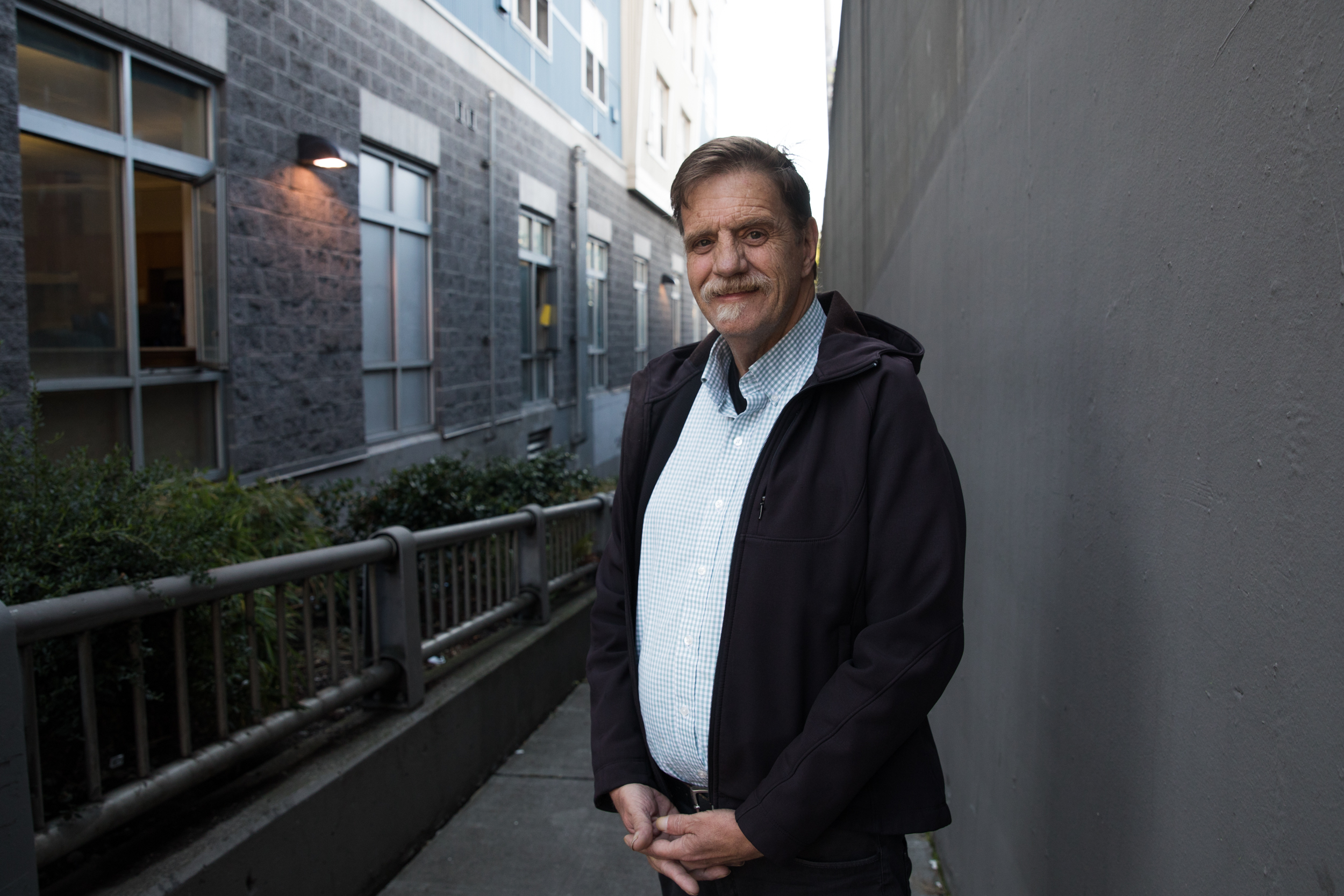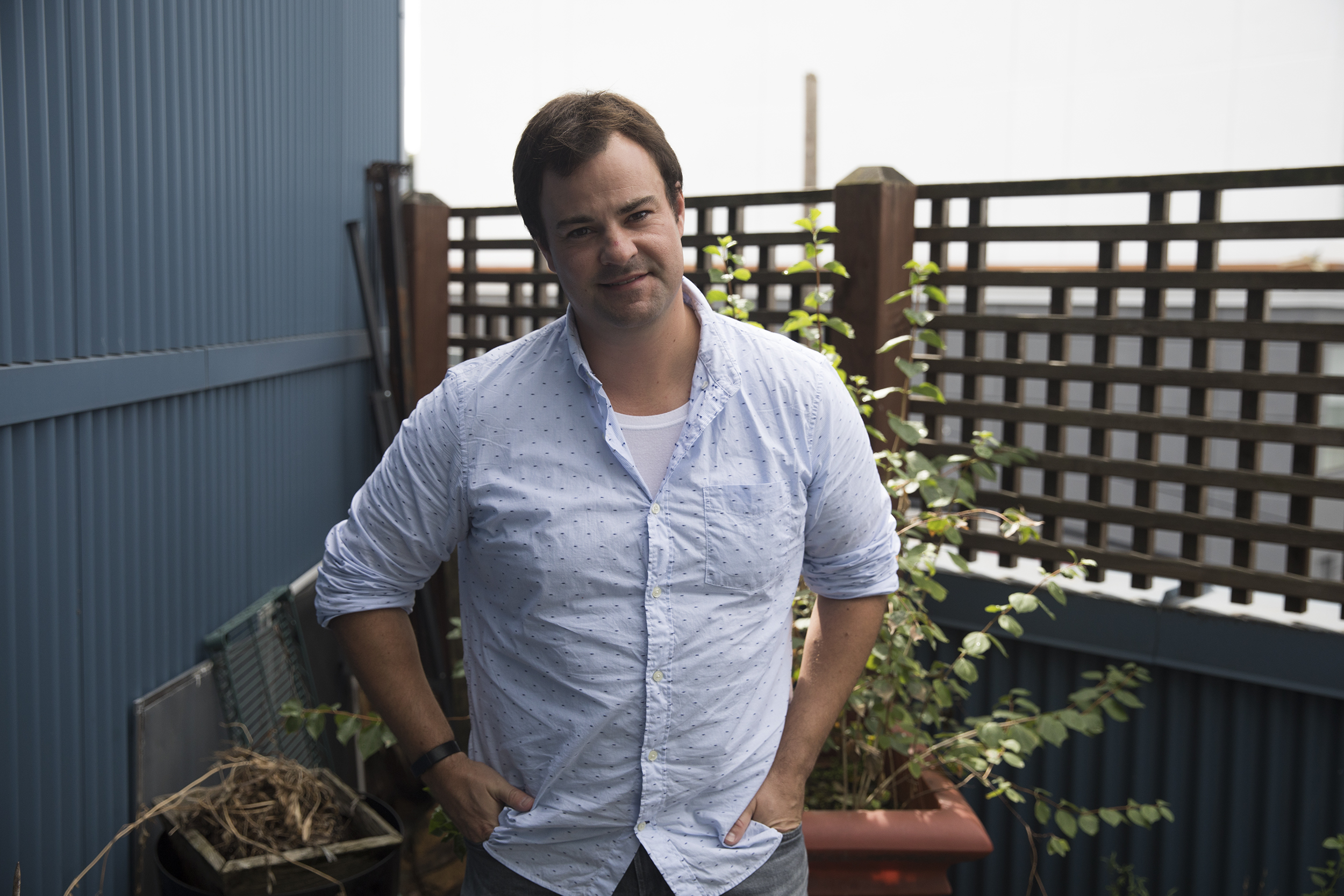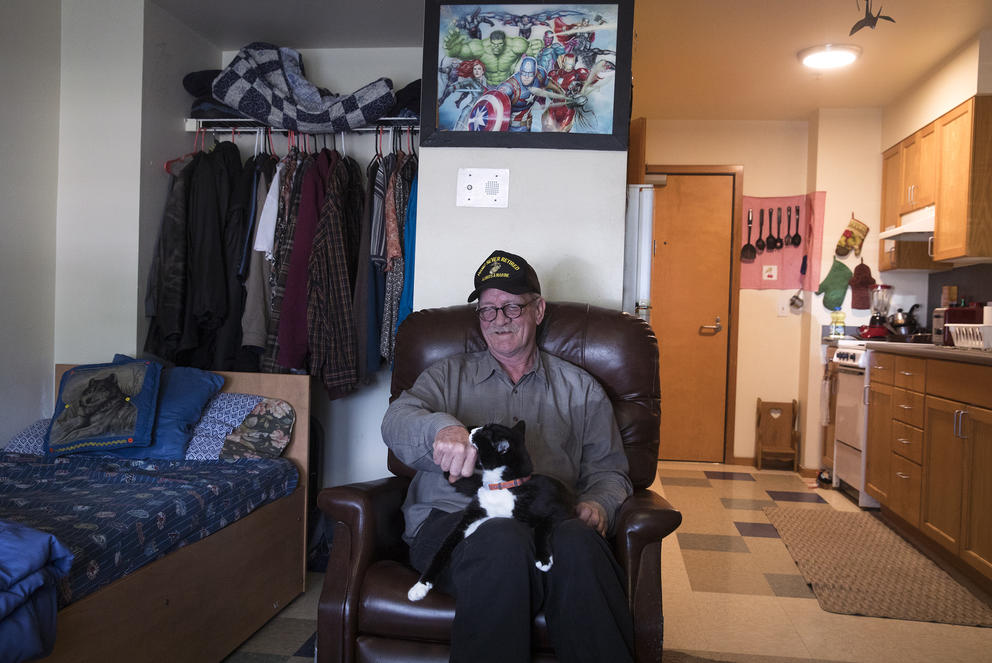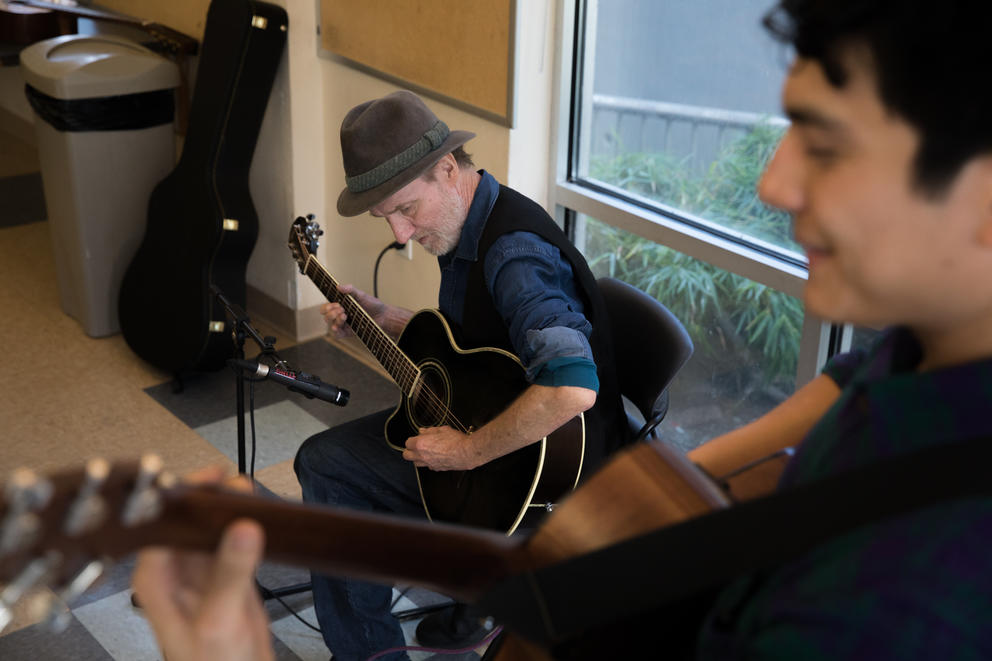Back then, the substance at the center of the debate wasn’t heroin — it was alcohol. But the conversation about how to deal with what were then known as “chronic public inebriates” would be familiar to anyone following the opiate epidemic in 2019. “These people would be urinating, defecating, sleeping in doorways,” says former Seattle Police Chief Jim Pugel, who was then commander of the Seattle Police Department’s West Precinct. “We were spending $1,000 just to send people a mile up the road to Harborview. That’s the most expensive detox you can deliver.”
The best solution the city could come up with — creating special alcohol impact areas, where stores would be barred from selling certain kinds of high-alcohol malt liquor that low-income and homeless drinkers favored — was unpopular with store owners, the beverage industry and residents of nearby neighborhoods, who argued that the bans would simply push the problem into their front yards. “We were stuck in the middle,” Pugel recalls.
Into this impasse stepped Bill Hobson, the head of the Downtown Emergency Service Center, offering a third option: “Wet housing,” where chronically homeless people with alcohol use disorder would be allowed to live, and drink, without judgment or expectations. Hobson’s theory was that people could move successfully from the streets to housing without first going through treatment or other interventions — a controversial position, given the prevailing view that people living on the streets would “fail” at housing unless they got sober first.
Today, the concept of “Housing First” is enshrined in city housing policies across the country, including Seattle and King County. (The authorizing legislation for the proposed new regional homelessness authority, for example, explicitly mandates “evidence-based, housing first” policies.) So it can be easy to forget how radical the idea was just 20 years ago, when most programs targeting chronically homeless people required sobriety and intensive case management as prerequisites.
“We were skeptical — hell, yeah, we were. We thought, if you want someone to stop drinking, you should just make them stop drinking,” says Pugel, currently running to represent District 7 on the Seattle City Council: “My views have evolved since then. I’m not a Cro-Magnon anymore.”
The result of Hobson’s vision, known simply as “1811 Eastlake,” now sits on the edge of the South Lake Union neighborhood and has been serving Seattle residents for the past 15 years. The unobtrusive blue-and-gray, four-story building houses 75 formerly homeless men and women with severe alcohol use disorders and provides them with meals, counseling and health care, no strings attached. The program has saved money, and lives, by using the principles of “harm reduction,” which holds that reducing the harm people cause themselves and others through their substance use is beneficial in itself, whether or not the person quits using the harmful substance.
Pugel recalls that Hobson, who died in 2016, would declare loudly, “This is housing for drunks!” to anyone who seemed to misunderstand the purpose of what DESC was doing. Although current DESC Director Daniel Malone doesn’t remember him using “those exact words,” he says Hobson was always clear that the purpose of 1811 wasn’t to get anyone sober or to turn clients into clean-cut, productive members of society; it was to provide housing for people who had “failed out” of abstinence-based treatment and housing programs multiple times, were chronically homeless and had less than a 5% chance of “achieving and maintaining sobriety.” The point wasn’t to stop alcoholics from drinking; it was to improve their quality of life and reduce the amount they cost the public, in that order.
Although the project got early buy-in from the Seattle Police and Fire departments, others were skeptical. John Carlson, the conservative talk show host and Crosscut columnist, derided the project as “bunks for drunks.” Fox News talking head Tucker Carlson went further, calling it “a dream for winos.” A group of nearby business and land owners, including the Benaroya Co. and Northwest Trophy, sued to stop the project, and they nearly succeeded. The case was dismissed by the state Supreme Court in 2003, but they dragged out the appeals process to the point that DESC had to give up $5.5 million in federal funding because the timeline to start construction ran out.
Robb Anderson, whose family owns Northwest Trophy, stands by his opposition to the project. “We were already seeing issues before 1811 went in with transients [doing] damage to vehicles, urinating and defecating and so forth,” Anderson says. “My personal belief is, I’m not a big fan of allowing people to drink and come and go as they please. I believe in sobriety if you really, truly want to help them.”
Anderson says the behavior continued after 1811 Eastlake opened, with residents congregating in front of the entrance to his business, threatening to kill customers, and urinating frequently in his parking lot. Malone denies those claims. Anderson’s trophy manufacturing business left the area in 2007, but 1811 is still there, and still the only project quite like it in Seattle.

Noah Fay, housing programs director at DESC, who was one of the first managers of 1811 Eastlake, showed me around on a recent late-summer afternoon. On the first floor, we moved past the reception desk and into a community space that looks out at the concrete pillars of the East Denny Way overpass. It is a darkened room filled with 25 cubicles where newcomers to the program sleep under close supervision while they wait for an apartment to open up on the floors above. Turnover, according to Fay, is low: “We rarely ever see people decide it’s not for them and move out, mainly because we just don’t have folks who could ever afford market-rate housing.”
Up on the second floor, a large, sun-drenched room is filled with paintings created by 1811 residents as part the Life Enhancing Alcohol-management Program. LEAP provides residents with leadership opportunities within the building, “meaningful activities” like art classes and a community garden, and “come as you are” groups that serve as an alternative to abstinence-based peer support groups like Alcoholics Anonymous. The program was designed collaboratively by staffers with the University of Washington-Harborview's Harm Reduction Research and Treatment (HaRRT) Center, DESC and building residents.
“We discovered through conversations with residents that, while they were living outside, many of the people here had lost connection to art and music and other things that brought them joy,” says HaRRT Center Co-Director Seema Clifasefi, who is overseeing the art room this afternoon. “This was a way for people to rebuild meaning for themselves.”
While we’re talking, Randy, a 66-year-old resident who recently moved back in to 1811 for a fourth time, wanders in. Fay asks if he’s staying hydrated in the summer heat, and he nods, lifting his bottle of Gatorade. “I’ve got it together now,” he tells Fay. “You’ll see what I mean when you see my place.”
As another resident begins playing the piano and singing in the background, Randy invites us up to his studio apartment, which is small but cozy, with a kitchenette, bathroom and just enough room for a plush purple velvet couch, a small table, and a narrow bed shoved up against one wall. Randy says that after leaving the program three times, he’s determined to make it work. “I just can’t do it alone on the streets anymore. I’d be so vulnerable,” Randy says.
In the years since 1811 Eastlake opened, several peer-reviewed studies have validated two of the main theories underlying the experimental project. The first of those studies, from 2009, showed that the project cut residents’ use of public services, including emergency services and jail, in half, for an annual savings of about $4 million — a finding that has been corroborated by additional studies in the years since. “[Opponents] said that it’s an outrage that we’re going to spend public dollars on this population,” says Malone. “We countered that argument by helping people understand that they were already spending a fortune on this population and this was an opportunity to spend less.”
The second study, in 2012, demonstrated that even in the absence of treatment or sobriety requirements, residents at 1811 Eastlake managed to maintain their housing and drink less. The study, which lasted two years, found that participants reduced their drinking by 7% for every three months they lived in the building. Some stopped drinking every day, or reduced their drinking to the point that their urine tests looked like they didn’t drink at all.
Some even got sober.
Joey Stanton, a former 1811 resident who now works as a research consultant at the HaRRT Center, is one of those people. By the time an outreach worker offered him a spot at 1811, Stanton says, he had been to the emergency room countless times, including one stay for a life-threatening infection that lasted almost two months. “I was very, very sick,” he says.
Today, Stanton — with jeans, long mustache and tendency to sprinkle f-bombs liberally throughout a conversation — seems more like a long-haul trucker than the guy who showed up at 1811 in 2003 after years of living on the streets, most recently in West Seattle. Sitting in a conference room in the HaRRT Center office at Harborview, Stanton recalls his first night at 1811 Eastlake: “Noah [Fay] walked me into my cube. He told me I was safe, that I could stay there, and, his exact words, ‘Don’t hit anybody.’ And I looked at him and said, ‘Get the fuck out of my cube.’ And he did.”

The changes didn’t all come at once, Stanton says. That was the whole point of living at 1811, Stanton says: gradual improvement — whether it meant that someone was “drinking Natty Lite instead of hand sanitizer” or voluntarily drinking water along with their morning vodka.
“What this place does is give you an opportunity to change your own reality,” Stanton says. “It doesn’t have to be conditional. Once I started down that road [toward sobriety], I was encouraged, but people aren’t discouraged there for not going down that road. There's no ramifications.”
Since 1811 Eastlake opened, the gospel of Housing First has spread across the United States, and the term has become a part of the vernacular. “There were Housing First programs before 1811, but it was the first one that was empirically researched, it was the first one that had a program that was rigorous, and it was the first that focused specifically on substance-using populations,” says Susan Collins, HaRRT’s other co-director, along with Clifasefi.
According to Collins, most big U.S. cities now have at least one housing project that allows people to use substances on site, and Seattle has dozens, many of them developed by DESC or Plymouth Housing, another provider of low-barrier housing for formerly homeless people. The 1811 Eastlake project remains unique, however, as the city’s only housing project dedicated to serving the needs of long-term, chronically homeless people with alcohol use disorders — and it paved the way for other projects that allow drinking and drug use by default, even if their primary purpose isn’t to serve a specific group of substance users.
“I don’t think it’s overstating it to say that 1811 was one of the most galvanizing forces for Housing First becoming a federal and state policy for how we serve people with behavioral health issues and history of chronic homelessness,” Fay says. “There’s still a long way to go, but the distance is much less than it was before.”

If there is a threat to Housing First in Seattle, it can be found in the current backlash to the city’s visibly homeless population — a backlash epitomized by KOMO TV’s “Seattle Is Dying” special earlier this year. That program, which focused on a group of so-called “prolific offenders” with severe behavioral health issues, argued that a “compassionate” approach to addressing crimes committed by people with severe mental illness and addiction would involve “enforcement and treatment,” not housing and medical care. Earlier this month, in response to those concerns Mayor Jenny Durkan proposed linking jail releases to mandatory, abstinence-based treatment, which is the opposite of harm reduction.
“The fear comes from a real place for a lot of people,” Collins says. “Unfortunately, something like ‘Seattle Is Dying’ takes this real and valid fear and concern that people have in the community, and it sets it toward, ‘We need to round these people up and lock them up in treatment until they’re ready to come outside and be like us.' ”
At the national level, conservative outlets like Fox News are egging President Donald Trump to do something about homelessness in West Coast cities like San Francisco and Seattle, which the conservative network has portrayed as unlivable wastelands “spiraling out of control” because of liberal policies that coddle homeless residents. Last week, Trump said homeless encampments were destroying the “prestige” of cities like San Francisco, fueling rumors that he planned to round up homeless Californians and relocate them to government-run internment camps.
No one in Seattle is proposing mass incarceration, or suggesting that the main problem with homelessness is that it damages the city’s “prestige.” But plenty of elected officials have started flirting with what City Attorney Pete Holmes referred to earlier this month as “the carrot-and-stick” approach to chronic addiction and homelessness. Housing First advocates point to years of research showing that the “stick” doesn’t work for people like the residents of 1811 Eastlake. But, they say, they have a long way to go before policymakers and elected officials are convinced.
Stanton hopes that if policymakers aren’t compelled by the evidence, they may find the cost savings compelling enough to put their “moral stance” against drug and alcohol use aside. “I would hope that in 10 years, there would be enough tangible dollars saved, proving that this stuff saves money, that people could no be longer naysayers,” Stanton says. “I wish that we could have less fear and more understanding, because [that's] what's really getting in the way of change right now — fear.”
Mike Zachary, a resident and artist living at Downtown Emergency Service Center's 1811 Eastlake shelter, plays music during an art zine release party with Victor King, a UW research coordinator with Harm Reduction Research and Treatment (HaRRT) Center, at the shelter in Seattle's South Lake Union neighborhood, Sept. 19, 2019.




